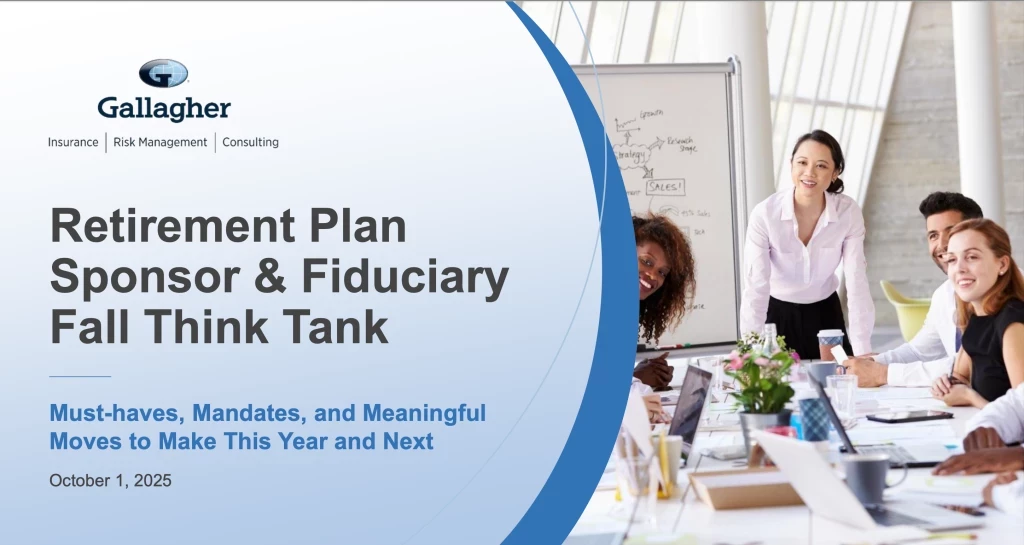The Importance of Experience from a CXO
Add bookmark
The role of Chief Experience Officer (CXO) is relatively new to healthcare. While the responsibilities of this position are typically defined by the context and needs of the organization, the division to which this role reports varies greatly. In a recent field survey1 of healthcare Chief Experience Officers (CXOs), about a third indicated they were responsible for Organizational Culture, a quarter oversaw both Employee and Patient Experience, yet less than 12% had any sort of formal relationship with Human Resources.
Culture, Team Member Experience (TX) and Human Resources (HR) are imperative to a positive Patient Experience. In order to be effective, the CXO should have a clearly formalized relationship with the CHRO.
Importance of Experience
Building the Foundation
Team member engagement is a foundational pillar, upon which rest several organizational objectives, irrespective of the industry and mission of the organization. It is even more relevant in industries such as healthcare, where an error can result in multiple deaths. The relevance gains momentum in times where healthcare is experiencing high burnout with suicide rates double that of other industries, and a time where employers are competing for skills, the numbers retiring exceed those entering the workforce and an industry turnover of about 20% 2. This significance grows exponentially when we place this against the backdrop of skyrocketing costs of healthcare in the US3, uncertain federal funding programs and increasing competition from non-traditional players 4.
Team member engagement directly impacts Patient Experience (PX) and Safety outcomes. The top quartile of engaged healthcare teams exhibit 70% lower safety incidents than those in the bottom quartile 5. A 5-point change in Engagement score impacts 1% profitability 6.
In my second week as the Chief Experience Officer (CXO) at Parkland, Judy Herrington, Vice President of Nursing made it very clear to me that the “plate” of the leader on the frontlines overflows with priorities marked urgent and more urgent, with new initiatives added daily, and few taken off. We conduct various surveys, and each survey ends up producing another set of “action items”. These action items are then pushed down from the C-Suite through the chain of command to the front-line leader. When the front-line leader attempts to implement, they can receive resistance from the team members as they are already busy. This results in two phenomenon: the burnout of the front line leader who is under pressure from above and below, and disengagement of the frontline team. The engine of senior leadership driving for results is pushing the train of the many hierarchical leaders down the track, where the last coach, the front-line team member, is against the blocks at the end of the track. Further pushing from leaders only leads to the train buckling – more misalignment, turnover, cost over runs and safety issues.
While it seems logical that Team member Experience and Patient Experience should be aligned, yet, in the survey of CXOs in the US Healthcare Industry1, only 24% of the CXOs indicated ownership of Team member Experience. Interestingly, another 28% suggested they would be more effective in their role if Team member Experience was included in their scope. Furthermore, 36% of the CXOs indicated they were responsible for Organizational Culture while an additional 28% suggested they would be more effective if this was included in their scope.
TX and PX initiatives can be, or in fact, should be actioned together. Safety & Quality initiatives need to be clinician led to ensure buy in and sustainability, while being closely coordinated with TX & PX. Various permutations of this model are being used in various healthcare systems and are organization and leader dependent. While that is the case, 8% of the CXOs surveyed were responsible for Safety & Quality, half of whom were actively attempting to divest themselves of that function.
Aligning TX and PX is also logical from a Financial perspective - for reimbursement and for customer retention and acquisition.
Examining the financial logic from a reimbursement perspective: TX impacts Communication of Nurses which is a key driver for “Hospital Consumer Assessment of Healthcare Providers and Systems” (HCHAPs) scores. TX also impacts safety outcomes. HCAHPs, and safety outcomes are utilized in the Value Based Purchasing (VBP) model to calculate reimbursement for Medicare services provided by the organization. For the sake of simplicity, I am only demonstrating HCAHPs in the diagram below:

Customer retention and acquisition are also impacted by TX. From a marketing perspective, TX impacts the experience of the Patient and their family, and this impacts the customer churn. Positive team member experiences will decrease the Cost of Customer Acquisition (COCA) and the Cost of Customer Retention (COCR) substantially, thus making the financial case again for aligning TX and PX.
Volunteer Services also play a major role by not only providing some man hours at no cost, but more importantly, by engaging the community. They are an informal and more effective means of communicating the image, mission, vision and values of the organization into the community from first hand experiences. This is heightened in the age of social media and impacts COCA and COCR. Active volunteers are crucial for effective Patient Family Advisory Councils (PFACs) and provide valuable insights from a Voice of the Consumer (VOC) perspective. They are also excellent ambassadors to patients and their families, in allaying any fears as a true third party that may have experienced or seen a positive outcome of a similar procedure at the organization. While 28% of the CXOs surveyed managed volunteer services, another 20% were working on bringing them into the experience fold to maximize such opportunities.
The dynamics of the factors impacting Team member & Patient Experience that are influenced by HR and Culture of the Organization are examined in the context of the data from Parkland (inclusive of both Parkland staff and UT Southwestern providers primarily assigned to Parkland). The top factors were:
- Teamwork, Recognition, Leadership cares about “me”, and factors impacting burnout (time to do my job (staffing), meaningful feedback, compensation, recognition, influence over decisions)
The interplay of these variables, when layered on top of the financial model discussed earlier, can be represented in the diagram as below:

The system dynamics model above depicts that the primary drivers for HCAHPS are Team member Engagement, Communication with Nursing and Trust in Provider. If we examine Patient’s Trust in Provider (PTP), it is dependent upon Time spent with provider (staffing) and provider Burnout, both of which lead us back to other variables leading to HR and Culture. Other variables are mapped in a similar manner. Note the number of variables that are in the purview of the HR team.
While other support initiatives are required, such as those in the realm of Process Improvement and Technology, to affect a meaningful change in TX & PX metrics; HR is the key.
REPORT: The Interesction of Employee Engagement and Business Success
When we set up the CXO role at Parkland, our CEO, Dr. Fred Cerise and our then Chief Talent Officer,
Dr. Jim Dunn saw in their wisdom the logic of placing both Team member and Patient Experience under the CXO. It is important to note that while we have had leadership changes at Parkland, this structure has not changed and is now being reinforced even further by our current CTO, Felicia Miller. Leveraging this strategy continuously over the past three years has helped achieve the following metrics:
- HCAHPS scores for the Quarter ending December 2019 saw us in the 90th percentile for the National Database and in the 93rd percentile for University Health Systems Consortium. (Moving from the 79th and 75th percentiles respectively since Sep 2017).
- We achieved our Annual HCAHPS 2019 target of 89.3, a statistically significant improvement.
- Mean Employee Engagement score rose by 17 percentile ranks; nearly 6% over three years.
- Number of Tier 1 leaders rose from 32 to 122 over three years.
- Turnover decreased from 18.5% to 15.1% in 2018, representing savings of $9 million and is annualized at 14.8 % for 2019.
- Employee engagement survey participation grew from a flat 59% in 2014 and 2016 to 79% in 2017 and 88% in 2018.
The theory of combining TX and PX, its practical application at Parkland and resultant outcomes - all point to the benefits of having TX & PX under one leader, the Chief Experience Officer.
References
- “CXO Structure Survey”, Vishal Bhalla, February 2020. This field survey was conducted of CXOs in the US Healthcare industry. Further details can be obtained by reaching the author directly: vish@alum.MIT.edu
- “2019 NSI National Healthcare Retention and Staffing report”, Brian Colosi, NSI Nursing Solutions, March 2019. https://www.nsinursingsolutions.com/Documents/Library/NSI_National_Health_Care_Retention_Report.pdf
- “US Healthcare costs skyrocketed to #3.65 Trillion in 2018”, Erik Sherman, Fortune.com, February 2019. https://fortune.com/2019/02/21/us-health-care-costs-2/
- “Top 10 Disruptive Companies to Watch in the Healthcare Space”, Jennifer Bresnick, Healthanalytics.com, July 2018. https://healthitanalytics.com/news/top-10-disruptive-companies-to-watch-in-the-healthcare-space
- “5 Ways to Improve Employee Engagement Now”, Robyn Reilly, Gallup, January 2017. https://www.gallup.com/workplace/231581/five-ways-improve-employee-engagement.aspx
- “When Patient Experience and Employee Engagement both Improve, Hospitals Ratings and Profits Climb”, Nell W Buhlman, Thomas H Lee, HBR, March 2019. https://hbr.org/2019/05/when-patient-experience-and-employee-engagement-both-improve-hospitals-ratings-and-profits-climb




















